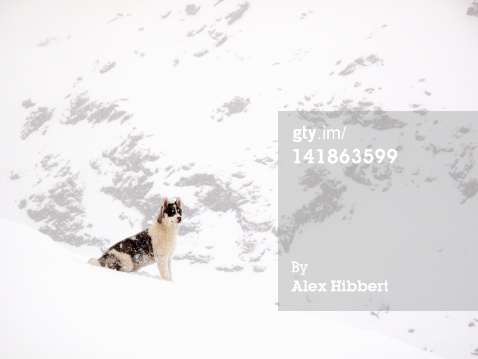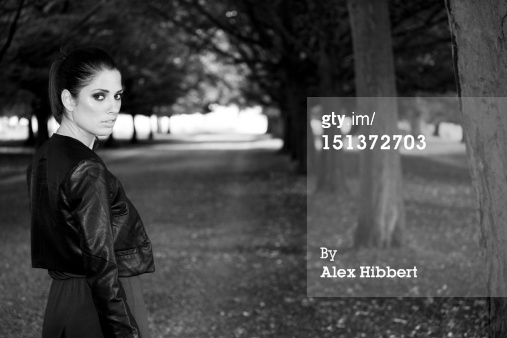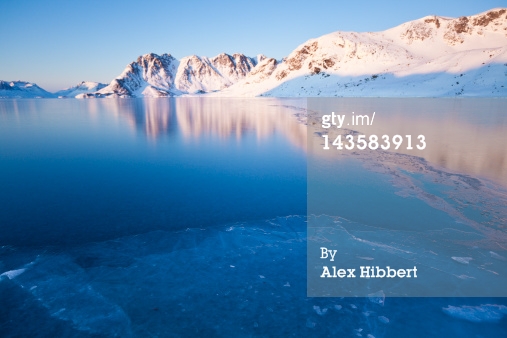A future for pictures.....and Instagram has very little to do with it.
In a rare case of the inner workings of the photographic industry peeking into public view and debate, a mini-storm seems to have rumbled along whilst I've been up in the Arctic this month. Most of you will visit this website to share in my passion for the cold regions of the world and my journeys there, but some will know that stills photography is another passion on both a creative and commercial level.
 The storm I'm referring to is of course the news that Instagram-owners Facebook may decide to sell images of its members without payment to the copyright-holders. In the fallout and subsequent back-down from those who wrote the new terms and conditions, it may be that the situation wasn't as bad as some feared and at least some of the anger was a storm in a teacup. But, critically, it is the first time I can remember when the photo industry as a whole has had the interest of the public.
The storm I'm referring to is of course the news that Instagram-owners Facebook may decide to sell images of its members without payment to the copyright-holders. In the fallout and subsequent back-down from those who wrote the new terms and conditions, it may be that the situation wasn't as bad as some feared and at least some of the anger was a storm in a teacup. But, critically, it is the first time I can remember when the photo industry as a whole has had the interest of the public.
A lot of things have happened in the history of photography (and forgive me for the slant towards professional photography here as it's most familiar to me and easier to chronicle) over the past decades and especially the last few years:
- In the early-1990s, stock agencies such as Getty Images and Corbis were created and grew. Professional photography at this time was dominated by individually commissioned photographs by staff or freelance photographers, whether for travel subjects or editorial fashion. There was an uproar within the conservative photo industry, who feared a loss of earnings, as they did with the advent of colour film, autofocus and most major developments. These fears, especially about 'stock', were based around worries over photography becoming easier and more accessible, with obvious implications for bottom lines.
- Stock grew fast in the 1990s, agencies were highly selective 'closed door policy' clubs and photographers who were on the inside could become very wealthy. This was driven by high image licence values still being cheaper than sending a photographer around the world to create a series of exclusive photos. Agencies, stock photographers and buyers were happy, although photographers used to commissions were not - seeing the need to take photographs speculatively with no sale certain unacceptable. The commercial risk was being placed on the laps of photographers and this is a trend which has grown ever since.
 - The digital revolution which followed the millenium had two main effects. Firstly, cameras used by professionals were fast becoming digital, with a high turnover rate compared to older film bodies. Film cameras such as the Canon 1v or Nikon F5 cost around £1200 with a roll of Velvia film developed at well over £7 against a modern digital Canon 1D or Nikon D5 of between £2500 and £6000 with no film costs. This aided accessibility and attracted the new generation of computer-literate photographers. Secondly, instead of the high-overhead method of duplicate slides, lightboxes and photo agencies sending out slides or CDs to photo buyers, images went online. Suddenly, the 50-80% commission cut taken by agents seemed less justifiable as their running costs dropped. The seeds were sown for anger towards the agencies who had previously been a cashcow for savvy photographers.
- The digital revolution which followed the millenium had two main effects. Firstly, cameras used by professionals were fast becoming digital, with a high turnover rate compared to older film bodies. Film cameras such as the Canon 1v or Nikon F5 cost around £1200 with a roll of Velvia film developed at well over £7 against a modern digital Canon 1D or Nikon D5 of between £2500 and £6000 with no film costs. This aided accessibility and attracted the new generation of computer-literate photographers. Secondly, instead of the high-overhead method of duplicate slides, lightboxes and photo agencies sending out slides or CDs to photo buyers, images went online. Suddenly, the 50-80% commission cut taken by agents seemed less justifiable as their running costs dropped. The seeds were sown for anger towards the agencies who had previously been a cashcow for savvy photographers.
- By the mid-2000s commissioned photography as a sector of professional photography was slashed in size as most photo buyers were happy with relatively cheap off-the-shelf offerings and agencies had collections of millions of images. Commissions survived only for very high-end magazines and advertising uses. A commissioned shoot could cost between £10,000-30,000 whereas even the most costly image licences from Getty would be £5,000, but more commonly £100-1,000.
- Another ogre in the eyes of the photo traditionalists was the rise of Royalty Free images, a new type of stock image. Instead of an image being priced by usage, territory, circulation etc., an image had a set price for any usage and could not be exclusive. Within just a few years, the dominance of the traditional Right Managed licence model was heavily reduced by the rise of Royalty Free.
- Perhaps the most significant development post-2005, years after the fall of commissioned photography as the dominant business model, was microstock. There is perhaps no word in photography more likely to invoke debate, anger, or even rage. Microstock was a dotcom business model developed by internet entrepreneurs, not those from the photo industry, and used Royalty Free images but sold them for very low prices of between £0.50-4.00. Photographers still received a low royalty split despite completing all the image editing and time-consuming search-engine keywording themselves. This attracted a massive influx of amateur or hobbyist photographers due to the 'anyone can play' entry policy and an opportunity to see their images in print - a vanity press or 'well why not?' sort of attraction. Perhaps unsurprisingly, only one thing was going to happen to prices across the market and even 'macrostock' agencies like Getty and newcomer Alamy began to slash prices to compete. A wedge was driven between former allies, the agents and the photographers, perhaps never to be removed. As the anger of photographers watching their royalty statements plummet rose, the transparency from agencies dropped and their aggression in writing new 'take it or leave it' contracts gained a real pace.
 - Policies of the larger agencies moved towards that of aggressive acquisitions, gobbling up dozens of small specialist agencies who could not balance the books. In most cases, they asset-stripped these libraries and made their staff redundant. A recent example was with the world-famous Oxford Scientific Films (OSF) (previously owned by Photolibrary). Some of their staff had been there for decades and photographers enjoyed a warm, personal and efficient relationship with editors. Quality was high and sale prices were above those seen elsewhere. Within weeks, their entire London office was summarily dismissed, the library was sent to Getty and took over a year to go back on sale and then OSF-refugee photographers had their image submission abilities to Getty ended.
- Policies of the larger agencies moved towards that of aggressive acquisitions, gobbling up dozens of small specialist agencies who could not balance the books. In most cases, they asset-stripped these libraries and made their staff redundant. A recent example was with the world-famous Oxford Scientific Films (OSF) (previously owned by Photolibrary). Some of their staff had been there for decades and photographers enjoyed a warm, personal and efficient relationship with editors. Quality was high and sale prices were above those seen elsewhere. Within weeks, their entire London office was summarily dismissed, the library was sent to Getty and took over a year to go back on sale and then OSF-refugee photographers had their image submission abilities to Getty ended.
- In 2009 Getty Images abandoned its previous closed door policy and opened its doors to the amateur Flickr community. A swathe of images were handpicked from the vast collection in a crowdsourcing frenzy. As many predicted however, Getty treated Flickr as a cheap source of fresh images and had little respect for the hapless photographers, changing the submission policies seemingly every week. By 2012, having taken the assets they wanted and taking 70-80% of sale prices, Getty more or less re-closed the doors.
- With the meteoric rise of social media and in particular, Twitter and Facebook, access to instant images is now universal and full-time professional photographers are just a small subset of content providers in the photo industry. Internet forums are a hive of activity, or rather, anger against organisations and the undeniable facts which are never going to change. Photographers want their industry to be ringfenced to reduce competition and for prices to be raised to previous levels. Agencies want to make money and are thoroughly aware that they no longer need to be accountable to their suppliers, the photographers, because there is an endless supply of images. Buyers want cheap images and some of them want quality images. Some want both.
- There is now a blurred line regarding image ownership and this has become manifested in the Instagram furore. People no longer feel that they have an iron-firm grip on their images and social media networks have grasped the potential value of their members' images. A show-down is inevitable which will end up in a tug of war that only one side can win.
The pattern is that every few years at ever-shortening intervals, a new trend causes widespread panic and then becomes standard as the next one arrives. Is this sustainable or will there be one short-termist revolution too far?
 Phew, not good news all round then. So, where to go from here? I think there are two things pro or semi-pro photographers cannot do. First, is to hark back to the good old days and wish for a return. It isn't going to happen but a large proportion of disillusioned old-timers will keep beating that drum. Second, is to permanently play the game with the stock agencies. Their market power and wealth will ensure they are always one step ahead and to placate their demands every contract renewal for ever-diminishing returns and next to no personal connection with an editor is a non-starter. Again, many will stay aboard the sinking ship until the agencies themselves cannot survive, applauding those who jump ship but not wanting to take the risk themselves. I have recently parted company with my main agents, Getty Images, after a number of last straws made the contract unworkable. Sleep-walking into allowing images worth tens or hundreds of thousands of pounds to slowly ebb away is not an option.
Phew, not good news all round then. So, where to go from here? I think there are two things pro or semi-pro photographers cannot do. First, is to hark back to the good old days and wish for a return. It isn't going to happen but a large proportion of disillusioned old-timers will keep beating that drum. Second, is to permanently play the game with the stock agencies. Their market power and wealth will ensure they are always one step ahead and to placate their demands every contract renewal for ever-diminishing returns and next to no personal connection with an editor is a non-starter. Again, many will stay aboard the sinking ship until the agencies themselves cannot survive, applauding those who jump ship but not wanting to take the risk themselves. I have recently parted company with my main agents, Getty Images, after a number of last straws made the contract unworkable. Sleep-walking into allowing images worth tens or hundreds of thousands of pounds to slowly ebb away is not an option.
A few new business models pop up every now and again but few gain traction and tend to sink without trace. The stranglehold is now in place with Getty and the other few surviving macros locked in mortal combat with microstock (and moving towards that micro RF model themselves) where there can be no winner. Microstock agencies themselves are showing signs of struggling and Alamy, the previously photographer-friendly agency, has again cut royalties paid to photographers and received a torrent of abuse for it.
What can those serious about creative photography, the commercial aspects of it and those keen to invest in new projects do? The key I think is to return to basics and see what it is we have. What assets are there on our table and what value do they have? If we decide a certain type of image has no value - it must be cut or relegated to personal interest photography and have no further investment made. If it has value, the market for it must be reassessed from the ground up and a fresh perspective gained. The world of business has never been so meritocratic and we have the internet to thank for that, as well as for some of the woes the photo industry now faces. There will always, always, be a need for still photographs and the web has boosted this. For most hobbyists, stock has been a time-consuming fad which doesn't really pay on a small scale and will likely be relegated to history.
Make no mistake - there is still a market for commissioned photography and this will be used by those picture editors with a very personal vision or deep pockets. But be assured that the barrier to entry for major commissions which are actually worth the staff, travel and other investments is now higher than ever. The very best in the world are competing for these big jobs which are like gold dust compared to in the 1980s or 1990s.
Quality products with a market who values them will always have a place. Encouraging for those who work hard and go that cliched extra mile to create unique imagery of the world around us. Less encouraging for those photographers who tow the line and join each evolution of the industry a little late. As for my own collection, I'm currently finalising plans for my five thousand or so best photographs.
My goal: to develop a commercially successful route via which I can continue to create photographs of things I love.